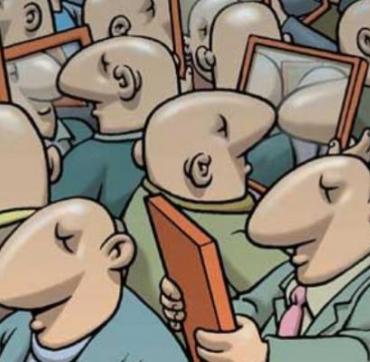Handwritten Treasures
especiales

There was a time when receiving letters and postcards was normal, everyday. Now, no one writes by hand. You don't hear the postman with his whistle. And I even think they must have a very boring job right now, delivering newspapers and bills, missing the faces of users when they received mail and guessing in surprise whether it was a letter that would be great news or a bad omen.
There are a few of us left, the dinosaurs who resisted the idea of extinguishing this practice. We enjoyed the process, writing on selected papers and folding them with a certain ritual in their envelopes. We stamped them and put them in the mailbox, on the doorstep, or straight to the intended person’s hand, expecting them to be received with the same emotion.
I like letters; I love receiving them, but I love writing them even more. I've always been that way. Since I was little, I wrote to my friend Giselle, and I still do. I always included notes written by my own handwriting if I gave her a gift. I think of it as a very personal touch, and it's so nice to find those memories 30 years later and remember happy times from my childhood, for example.
I also think of writing to my parents when I had to be away from Havana. There was a New Year's Eve when nostalgia was killing me, and I wrote almost every day, and the effect was a mix of sadness and joy. There was a telephone, but they liked the surprise of receiving them, and when we talked, they told me they read them together at the dining room table and sniffled at my absence, but they were happy to have me like this.
I inherited this taste from my parents. In a drawer, my mom kept all the postcards she'd ever received, especially for Mother's Day, as well as all the little notes with messages and letters from my uncle Delmar when he was in Angola in the late 1980s and they wrote to each other once a month. My dad also has his own corner of similar memories. And I, in shoe and cigar boxes, have kept everything from the tiniest leaf smaller because there used to be an initiative called "Secret Friend," which consisted of writing anonymously to a "friend" you randomly selected.
Perhaps that's how it all began for me. This activity was done at all levels, from elementary school to high school. The idea was to socialize and, at the same time, practice writing, develop creativity with words.
Letter writing is a romantic act that shouldn't disappear. It's an art, some say. Nothing like unexpectedly finding mail on your nightstand or at your doorstep, seeing your loved one's handwriting, and perhaps receiving a familiar scent with the letter, some scribbles, a dried flower, a leaf from the road, some seeds, a ticket from the movie theater we went to one day. The envelope fits anything you can think of.

Today, the digital era has almost buried the magic of postcards. Immediacy is very attractive compared to the long delays and sometimes the loss of messages because the system isn't perfect. Text messages, SMS (Short Message Service), or email or instant messaging applications have accustomed us to writing and receiving a response in a short time, but they have a weakness, in my opinion: they are ephemeral.
Convenience is slowly killing this tradition. However, except for the speed of digital technology, letters are no match. From the very beginning, it's a single act. Writing is an introspective project that begins with choosing a sheet of paper, an envelope, a stamp, a pen, or a pencil. It's a longer process, it's true, because it also involves going to the mailbox and certifying it if we want to be even more certain that it doesn't stray from its destination.
The wait is insignificant compared to the pleasure of holding a letter that followed the old protocol, that went around the world through the outgoing post office, the receiving post office, and the rest of the way to the front door.
Beyond what it feels like to prepare it, it's thrilling to imagine receiving it, opening the envelope, settling into a place with all the calm, intimacy, and attention possible, and becoming sensitized, touching, and smelling the paper as if to capture with all their senses such a sublime moment, then dedicating a special place to it in their memories and on their bookshelves.
It's unparalleled. A digital message will never have that impact; it can't be kept under a pillow or between the pages of a book to be found unexpectedly. Writing it requires reflection, abstraction, and best of all, it lasts. It's a gust of wind to nostalgia, but it also fosters remembrance in a positive way.
Letters are a very personal testimony, but thanks to literature, we know of valuable collections of letters, such as those written by Vincent van Gogh (Netherlands, 1853-1890) to his brother Theo (Netherlands, 1857-1891); also the love letters written by Napoleon Bonaparte (France, 1769-1821) to his beloved Josephine de Beauharnais (France, 1763-1814); those of Frida Kahlo (Mexico, 1907-1954) to her Diego Rivera (Mexico, 1886-1957), and those of Ignacio Agramonte (Cuba, 1841-1873) to Amalia Simoni (Cuba, 1842-1918), which, by the way, are compiled in a book with a very beautiful title: Para no separarnos nunca más (To Never Be Apart Again) (Casa Editora Abril, 2009).
For centuries, postal mail was more than essential for human interaction. Organized messaging systems existed in ancient Egypt and the Roman Empire, but it wasn't until the expansion of railroads and steamships that it accelerated and became international. It became faster, more efficient, and had a greater reach because it previously depended on simple means, which made it a time-consuming resource, especially when the destination was far away and a person had to travel by horse, or by other means.
It worked very well for a long time, then slowly lost prominence. With the emergence of telephony and internet, its use dwindled, almost relegated to parcel delivery and official documents. Today, it's a loss-making resource. That's why, very recently, PostNord in Denmark announced that it will stop collecting and distributing letters starting in 2026.
After four centuries of operation, it's no longer profitable, and this decision entails laying off thousands of workers and fewer options for those of us who want to continue writing. If what's expected in the long term happens, and other companies do the same, the gesture of writing letters and having them delivered to a mailbox is on the brink of extinction. However, we can continue writing them if that happens, and hand them in person or leave them in strategic locations, if we wish.
Out of nostalgia, letters are handwritten treasures for people with sensitive souls. It's a powerful gesture. We resist losing momentum, even if it's a declining activity. Perhaps less so. It's a letter that's glorified by the recipient, but it gives us huge inner happiness to receive it and, perhaps, become part of their personal museum, where over the years it finds beauty and contributes to their emotional memory.
It's true that the letter we place in mailboxes is an enormous test of patience, but also of connection. As I read somewhere, it's "a revolutionary act to choose slowness in a fast-paced world." But it's a symbolic act. Letters are emotional fossils, documents that remind us of our existence. I like to think that the last ones I've written will be seen in the future and brought back to a happy past.
So, here I finish and start writing by hand, even though the cold of the office has me shivering and sabotages my handwriting. I improvise a scene of inspiring music and find support from my colleagues for the details of paper, ink, envelope, even the candy I'll add. I'll add everything I find and consider essential, such as perfume, wildflowers, doodles, pumpkin seeds, drawings, and poetry. A lot of feeling, and my letter is ready. Now I just have to wait for its itinerary.
World Post Day is celebrated on October 9th, and International Letter Week is organized around that date. January 7th is World Stamp Day, and February 7th is Send a Letter to a Friend Day. However, any time is a good time.
Translated by Amilkal Labañino / CubaSí Translation Staff














Add new comment